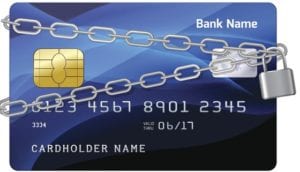You can bank on it. Americans rely on banking. Annual reports from the FDIC show only 4.5% of American households were unbanked in 2021, a level that has steadily decreased since the first survey in 2009. Unbanked households are those without anyone in them who uses a bank or credit union. That widespread adoption can help consumers in multiple ways, not least of which is receiving funds on every wage earner’s favorite day: payday.
In 2022, the American Payroll Association’s “Getting Paid in America” survey reported that 93% of respondents receive wages via direct deposit – a form of ACH or bank-to-bank transactions.
Because so many Americans rely on ACH, keeping these transactions safe, secure, and efficient impacts the daily lives of people at every income level across the country. But payday is not the only reason to care about ACH. Businesses also draw funds for services via ACH, and governments use them as convenient ways to issue refunds and other payments.
Who makes sure everything works out? You do. Everyone who uses the ACH network contributes to its good function by responsibly following rules designed for that explicit purpose. Those rules are set by the non-profit group, the National Automated Clearing House Association (NACHA).
Founded in the 1970s, NACHA administers the Automated Clearing House (ACH) network by creating the rules for it. NACHA does not process bank-to-bank transactions, however. The operators of the system are the Federal Reserve and The Clearing House. NACHA’s rules are meant to keep the system safe and secure. Those principles are part of the group’s foundational responsibility and focus. To accomplish this key piece of its mission, NACHA has created rules for everyone party to an ACH transaction.
Parties include businesses that accept payment for services via recurring or one-time positive pay transactions. They include businesses or organizations that send funds to payees using the same ACH system, and they also include anyone who accepts funds sent via ACH. Banks, credit unions, governmental bodies, businesses, and individuals using ACH are all expected to comply with NACHA’s ACH rules to ensure that the system functions smoothly.
What are NACHA rules?
NACHA does not create the only rules applicable to ACH, but they are important and mandatory. Their rules of the road govern your journey. So what are these rules, exactly? According to NACHA.org, “NACHA operating rules are the foundation for every ACH payment.” The rules are continually updated, according to NACHA themselves, and a complete written list of the rules, along with expanded guidelines, are published annually and sold by the organization.
Among the list of reasons why those rules matter is a key for any person or organization doing business: NACHA rules inspire trust. There are a number of ways they do this. NACHA operating rules standardize the procedures for initiating or receiving an ACH transaction so that many parties can use one system seamlessly. Standardization contributes to efficiency, which is itself a core value reflected in the rules of using the ACH system. Timeliness is essential in this area of financial transactions, further fostering trust by ensuring that funds are sent and arrive quickly and reliably.
Security becomes easier to ensure with standardized, timely, efficient systems as well. NACHA rules include guidelines on protecting personal identifying information as well as financial information, especially for consumers. Because of the nature of ACH information, NACHA hopes to secure its system and prevent fraud or other breaches of data security or integrity.
When fraud or data breaches do occur, NACHA rules govern the way to handle these exceptions and discrepancies, whether it includes disputing charges or returning funds.
Overview of NACHA operating rules
NACHA establishes operating rules or requirements for many areas of ACH. They aim to keep financial information safe and secure and update it to keep pace with changing uses of technology. Some areas of NACHA rules are described below.
- Laymen may not recognize the intricacies and nuances of the entire ACH system, but they do interact with it. Authorization is often where consumers meet a layer of security around ACH. NACHA requires that authorization be obtained before money can flow from one bank account to another, so consumers may sign off either physically or digitally on allowing an ACH transaction before it can occur.
- Other security rules for non-consumers include requirements such as encrypting all sensitive information sent, received, or stored online. Paper documents with sensitive information must also be kept in a safe place, often under lock and key.
- Some rules govern WEB debits for consumer payments “authorized or initiated over an online channel.” These rules tell the originators of these transactions to use a “commercially reasonable fraudulent transaction detection system.”
- Staying up with the times is a big deal for NACHA, who reported their awareness of consumers attempting to pay bills via virtual assistant technologies like Alexa and Siri. Rules address ways to make this possible and secure, too.
- Since merchants and financial institutions which process fraudulent transactions are liable for them, learning the rules around what to do when you discover fraud to quickly correct affected transactions is also key.
- What about the digital version of a bounced check? Rules exist for processing this as well. Stop pays will sometimes need to be processed, in which someone tells the bank to return funds to the payer from a payees account.
- International transactions have their own set of rules.
How to Comply with NACHA Operating Rules
Process, process, process. When it comes to compliance with NACHA operating rules, you’ll need to set up clean processes of your own. It’s a great idea to consult peers in your field for ideas on implementation, but first, you have to understand sound approaches that keep you compliant with NACHA operating rules. This understanding can help you decide which process truly meets NACHA standards. The ship is only as tight as your own comprehension of mandatory rules.
Some of your compliance goals will include validating routing numbers. Six-digit codes, routing numbers can be checked with a lookup tool. Payroll administrators may rely on outside payroll administration partners to help them securely check this as well.
Other areas of compliance include confirming the identity of your customers, diligently monitoring for any fraud which may occur, documenting the ways you protect private information and implementing the plan, and more.
Best practices already exist, so it’s not necessary to reinvent the wheel. Just be sure you do get yourself a wheel sized for your specific needs. Every business is capable of carrying out the procedures which make them compliant with NACHA rules.
If you’re enrolled in automatic bill pay, you should already be familiar with the regular notifications you receive to remind you that funds will be withdrawn from your account, per the permission you granted upon enrolling. That regularly scheduled notice arrives because NACHA mandates those messages. If you’re the originator of an ACH transaction, be sure to notify any consumer or business before either pulling from or depositing funds into their bank accounts to remain compliant.
Keep in mind that separate rules govern various transaction types, meaning you’ll need to be familiar with the rules for things like payroll deposits, collecting bill payments from consumers, and paying your vendors.
Learn More About ACH Compliance
You may never win a round of trivia with the competence and knowledge you accrue from studying ACH compliance, but Noggin Guru’s certifications will spur your professional advancement. Our certifications can help you to prove your grasp of and practiced skill in key areas of this important financial discipline. For ACH, we have arranged a body of knowledge into discreet sessions. Altogether, these sessions add up to a comprehensive overview of ACH processing and the ways it will intersect with your business.
We invite you to explore our nearly six-hour certification in mastering aspects of Automated Clearing House transactions. The ACH Certification directly addresses NACHA operating rules and the requirements for passing electronic data interchange to your clients in the session on ACH Exception Item Handling. A young man knows the rules, but a wise man knows the exceptions. Exception item processes that go along with operational responsibilities for receiving ACH transactions are addressed here too.
Additionally, we address the periodic ACH risk assessments required by NACHA operating rules in the session of our ACH Certification called “ACH Risk Management, Reporting and Monitoring.” Our sample ACH risk assessment will help you understand and discern outcomes representing areas of greatest financial exposure or risk to your institution.
Banking professionals and those working with financial transactions on a regular basis are also encouraged to browse our list of targeted certificates for areas such as debit cards, fraud, and wire transfers. These areas operate separately from ACH and the purview of NACHA but are also widespread methods for moving capital. The thorough know-how you’ll pick up with the Noggin Guru certifications are credentials you can take to the bank.








